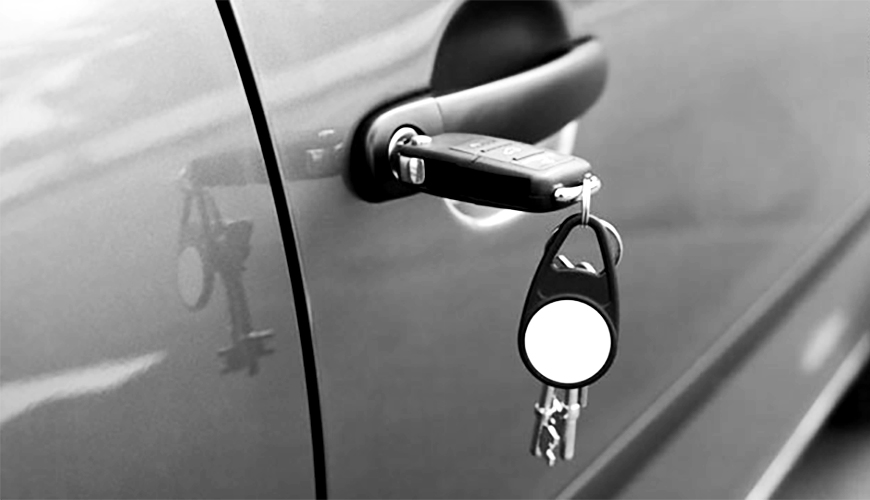
- 2 Min Read / Blog / 3.2.2020

Before cars reach the stage where they seamlessly integrate with our mobile devices, manufacturers have a number of technologies that can modernize vehicles and provide value to tech-hungry drivers. Many of these ideas revolve around streamlining or digitizing common practices, such as unlocking the car or finding parking, and providing alternatives to replace the proverbial key fob.
Most of these opportunities involve Bluetooth Low-Energy technology, which requires significantly less power consumption for passively connected mobile phones and also includes new features for beaconing between devices. “Bluetooth LE is giving cars all kinds of new capabilities, beyond what OBD can do,” said Punchkick strategist Billy Collins. “And that trend is only going to continue as both cars and smartphones get smarter.”
With this background Bluetooth awareness, cars and phones can communicate over a much wider range and exchange information traditionally reserved for radio-frequency key fobs. In the future, your car will intelligently unlock as you approach, assisted by the Bluetooth-aware smartphone in your pocket. In addition, wider range beaconing technology will help find your car inside a parking lot, beyond what geo-location is capable of today. “When your smartphone and your car are aware of one another, and can communicate over wider ranges, a lot of common frustrations will disappear,” said Collins.
“Mobile allows us to connect with things that traditionally required analog tools. It’s replacing the television remote, letting us unlock our cars, adjust the air conditioning, pay and order things. Mobile is removing unnecessary hurdles and absorbing anything that requires keys or switches into one centralized device in our pockets.” —Billy Collins, Strategist
Many of these innovations are dependent on Bluetooth or similar wireless integration into cars, but Collins argues that this evolution is likely and necessary. “I’m excited about the future of vehicle development, and how mobile is shaping that future for vehicle OEMs.” Integrating new proximity awareness technologies, similar to the rollout of CarPlay-style infotainment replacement systems, will create a development platform that technologists can explore while automakers reap the benefits.
These spaces will become even more interesting as wearables become more commonplace. “Wearables extend this convenience even further, because they remove the additional obstacle of the mobile device in your pocket,” said Collins. “These simple actions—like unlocking the car or finding it within a parking lot—are accessible from your wrist without having to unlock your phone and open an app.”
In the future, unlocking your car will be as simple as walking up to it with your Apple Watch.
Over time, as the wearable industry matures and platforms like Apple’s Watch OS and Google’s Android Wear become more capable, these products will alleviate the need for tethered smartphones altogether. “Because wearables have sensors for location or acceleration inside of them, soon they won’t even need to be tethered to a smartphone to do things like connecting to external devices,” said Collins. “They can do what they were made to do without a phone or a database to connect to.”